12 Most Common Pug Behavior Concerns
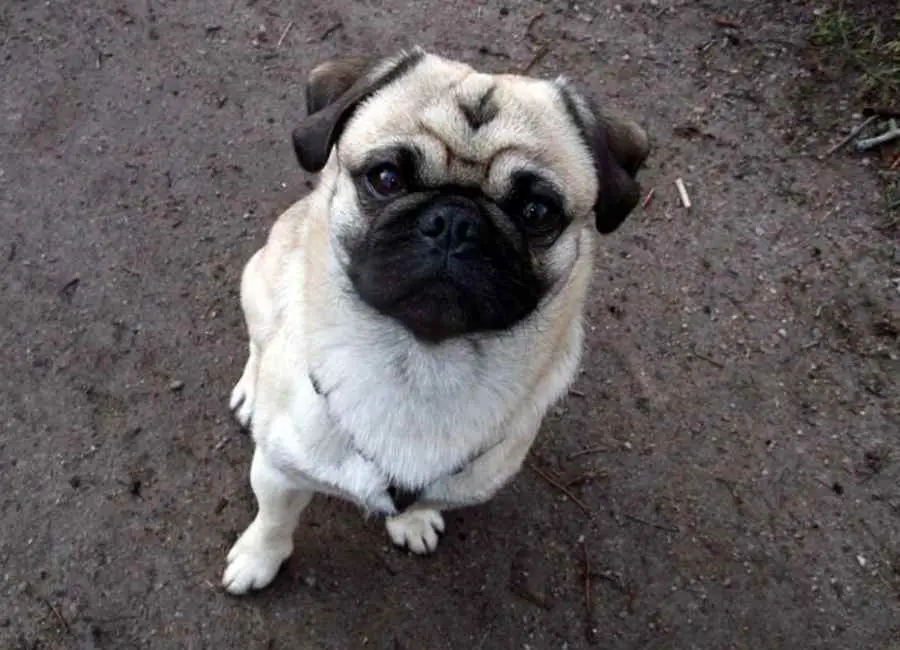
This post is aimed at discussing the most common pug behavior concerns you should know before getting a pug.
Are you a pug owner struggling to understand your furry friend’s behavior? Look no further! In this blog post, we’ll discuss common concerns that pug owners face and provide tips on how to handle them.
From separation anxiety to stubbornness, we’ve got you covered. So sit back, grab a cup of coffee, and let’s dive into the world of pug behavior!
Pug Behavior Concerns
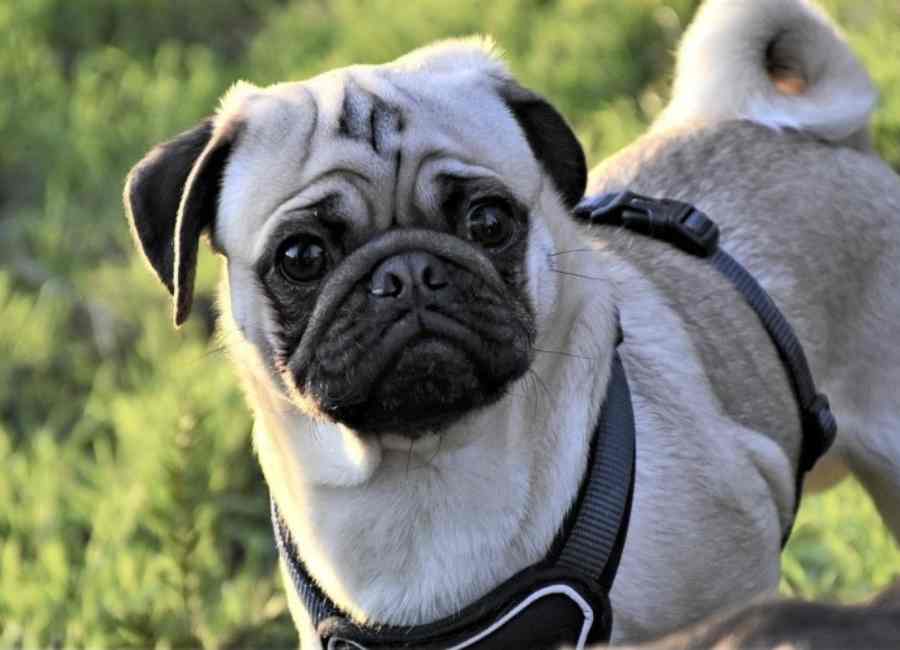
The following are some common pug behavior concerns you should know:
1. Stubbornness
Pugs can be delightfully stubborn, making training sessions challenging at times. Positive reinforcement, such as treats and praise, can be highly effective in encouraging them to follow commands.
Keep training sessions short, fun, and consistent to maintain their interest. Avoid harsh punishment or scolding, as it can lead to a more resistant and fearful pug.
2. Overeating and Begging
Pugs are true food enthusiasts and have a tendency to overeat, which can lead to obesity and health issues. Ensure that you provide them with balanced, portion-controlled meals suitable for their age and activity level.
Avoid giving in to those adorable begging eyes during mealtimes, as it can reinforce the behavior. Instead, offer healthy treats occasionally and provide mental stimulation through puzzle toys to keep them occupied.
3. Excessive Chewing
Puppy pugs, like many other breeds, love to explore the world with their mouths. Providing appropriate chew toys and rotating them regularly can help redirect their chewing behavior away from household items.
Puppy-proofing your home and using bitter-tasting deterrents on furniture can also discourage destructive chewing. If your pug has started chewing up your furniture or shoes, this could be due to boredom or anxiety issues.
Read more: 9 Right Ways To Discipline a Pug.
4. Attention-Seeking Behavior
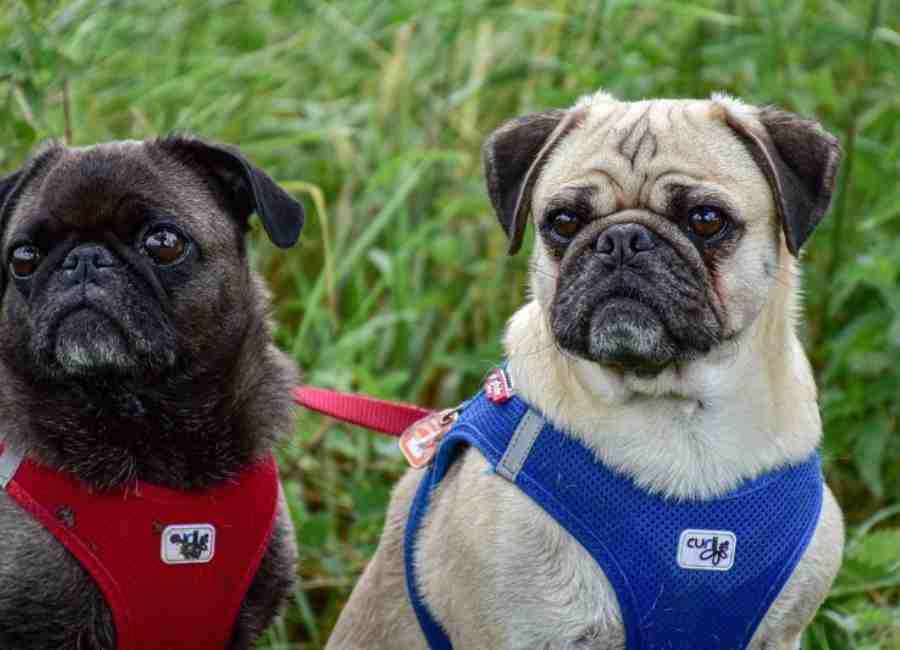
Pugs thrive on human interaction and may resort to attention-seeking behaviors when they feel neglected. Spend quality time with them daily, engaging in play and affectionate moments.
Establish boundaries for when you need personal space, and be consistent with training to discourage demanding behaviors. Reward positive behavior with treats or affection to reinforce the message.
5. Excessive Barking
Pugs are known for being expressive and may bark to communicate excitement, and boredom, or to alert you of something. However, excessive barking can be disruptive. To tackle this issue, observe the situations that trigger their barking.
Is it when someone comes to the door, or perhaps when they see other dogs outside? Once you identify the triggers, work on desensitizing them. For example, if they bark at the doorbell, practice having a friend ring the bell repeatedly until your pug gets used to the sound and no longer reacts with barking.
Whenever they remain calm in situations that usually cause barking, reward them with praise and treats. Positive reinforcement will help reinforce the desired behavior.
6. Separation Anxiety
Pugs are incredibly affectionate and bond closely with their humans. Consequently, pugs may struggle when left alone, leading to separation anxiety. To ease this, gradually increase the time you spend away from them. Start with short periods and gradually extend the duration.
Offer interactive toys or treat puzzles to keep them engaged during your absence. Before leaving, create a calming routine that includes giving them attention, a toy, or a treat. When you return, avoid making a big fuss; instead, greet them calmly to avoid reinforcing anxious behavior.
Read more: 8 Potential Reasons Why Pugs Are The Worst.
7. Aggressive Behavior
Aggression in pugs can stem from fear, anxiety, or feeling threatened. It’s essential to address aggression promptly and with care.
If you notice aggressive tendencies, consult a professional dog trainer or behaviorist. Punishment may escalate aggression and cause more harm than good. Instead, focus on positive reinforcement and counter-conditioning.
Reward your pug for calm and non-aggressive behavior. Gradually expose them to situations that trigger aggression, providing plenty of positive experiences and rewards.
8. House Training Issues
Housebreaking a pug can take time and consistency. Create a consistent daily schedule for bathroom breaks, including after meals, naps, and playtime.
Supervise them closely, especially during the initial stages of training, and take them outside immediately when you notice signs they need to go.
Praise and offer treats when they eliminate outdoors to reinforce the positive behavior. Avoid scolding or punishing accidents, as this can create anxiety and hinder their progress.
Learn more about house training a pug.
9. Excessive Licking
Licking is a natural way for pugs to show affection or seek attention. However, excessive licking can be bothersome, especially if they target certain areas like hands or feet. Pay attention to the triggers for their licking.
Redirect their focus to toys or other activities when they start licking excessively. If the licking persists, consult with a vet to rule out any medical conditions causing the behavior.
10. Destructive Digging
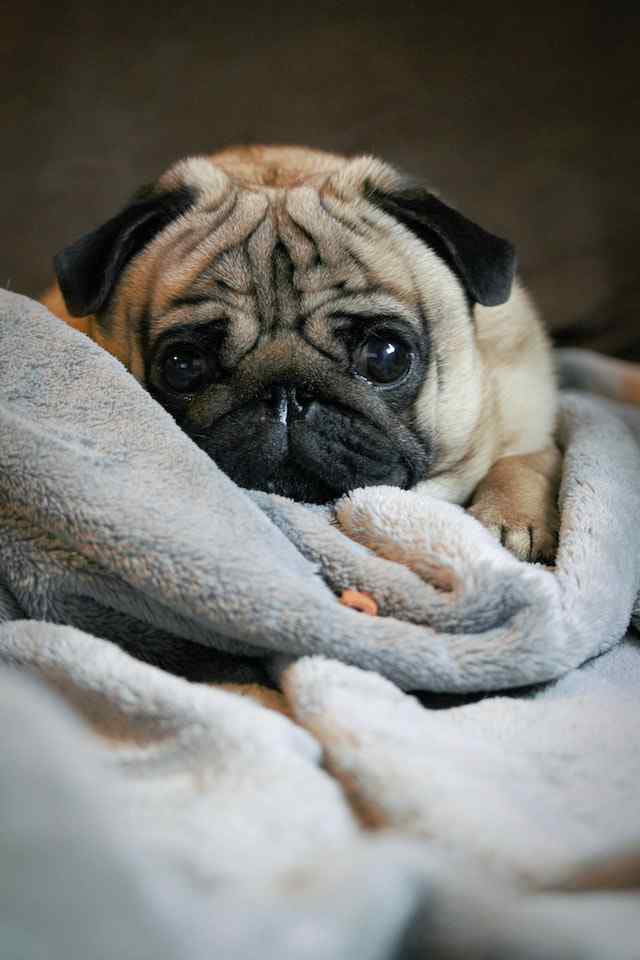
Destructive digging is a common behavior concern in pugs, which is characterized by digging around furniture, and carpets, or digging holes in the yard.
This behavior can be triggered by various factors, including boredom, anxiety, or predatory instincts. Pugs may also dig due to their natural inclination for burrowing, which is more common in small dogs.
This behavior can be destructive and costly, especially when it involves tearing up furniture or destroying landscaping in the yard. However, corrective measures can be taken to mitigate this behavior.
One way to address this behavior is by providing an appropriate outlet for their energy, such as exercise and playtime. Another solution is to create a designated digging area, such as a sandbox or digging pit, where the pug can satisfy their digging instincts without causing damage to the property.
11. Jumping on People
Pugs are affectionate dogs and might jump up to greet you or show excitement. However, this behavior can be unwelcome, especially when they jump on guests. Consistency is key when addressing this issue.
Teach them an alternative behavior, like sitting, to greet people. Whenever they remain seated instead of jumping, reward them with treats or verbal praise. Ensure that guests also follow the same guidelines and avoid encouraging jumping.
12. Pulling on the Leash
Pugs can be strong pullers, making walks less enjoyable for both of you. Consider using a no-pull harness or a front-clip harness, which redirects their attention when they pull.
Practice loose-leash walking, rewarding them for walking calmly by your side. Be patient and avoid yanking the leash, as this can be counterproductive and cause discomfort or anxiety.
Ways to prevent bad behavior in Pugs
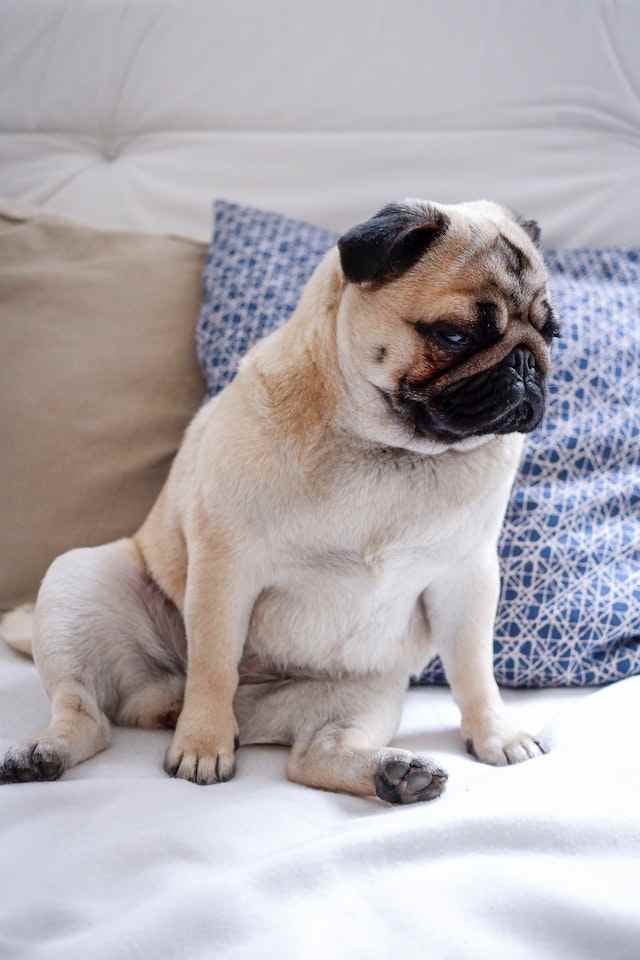
The following are some common ways to prevent some pug behavior concerns:
1. Puppy training
It is important to start training your Pug while it is still a puppy. This will help establish good behaviors and prevent bad ones from developing. Puppies can be trained using positive reinforcement techniques, such as rewarding good behavior with treats or praise.
2. Socialization
Pugs should be socialized from a young age to help them interact positively with other dogs and people. This can help prevent aggression and fear-based behaviors.
3. Exercise
Pugs are prone to obesity, which can contribute to behavior problems such as destructive chewing and excessive barking. Exercise is important for keeping your Pug healthy and happy.
4. Proper diet
Proper nutrition is also important for preventing behavior problems. Overfeeding can lead to obesity, while a poor diet can result in lethargy and other health issues.
5. Consistent routine
Establishing a consistent routine for your Pug can help prevent anxiety and other behavior problems. Pugs thrive on routine and predictability.
6. Positive reinforcement
Positive reinforcement techniques can be effective in preventing behavior problems. This involves rewarding good behavior with treats or praise, rather than punishing bad behavior.
7. Avoid harsh discipline
Harsh discipline methods such as physical punishment or yelling can be counterproductive, causing more anxiety and fear in your Pug.
8. Provide mental stimulation
Pugs can become bored easily, which can lead to destructive behaviors. Providing mental stimulation through toys and puzzles can keep your Pug’s mind engaged and prevent boredom.
9. Regular veterinary check-ups
Regular veterinary check-ups can help ensure that any underlying health issues that may contribute to behavior problems are detected and treated early on.
By implementing these tips, you can help prevent behavior problems in your Pug and ensure that it remains happy and healthy.
Related Questions
Why does my Pug bark so much?
Pugs are known to bark excessively if they are not trained properly or if they are feeling anxious or bored. Make sure your Pug is getting enough exercise, has plenty of toys to play with, and is given positive reinforcement when they are quiet.
Why does my Pug chew on everything?
Pugs, like many dogs, love to chew on things for a variety of reasons. They may be teething, bored, or experiencing anxiety. Make sure your Pug has plenty of chew toys and provide them with plenty of exercise and mental stimulation to alleviate boredom and anxiety.
Why does my Pug keep biting me?
Pugs may bite out of playfulness, aggression, or fear. Pay attention to your Pug’s body language and try to determine the cause of their biting behavior. Consult a professional dog trainer or behaviorist if you need help addressing the issue.
Why does my Pug jump on people?
Pugs may jump on people out of excitement or as a way of seeking attention. Train your Pug to ask for attention in more appropriate ways and make sure they are getting plenty of exercise to expend their energy.
Why does my Pug refuse to go outside?
Pugs may refuse to go outside if they are afraid of something specific, such as loud noises or other animals. Try to identify the cause of their fear and work with a trainer to help your Pug overcome their anxiety.
Why does my Pug have separation anxiety?
Pugs may experience separation anxiety if they are left alone for long periods of time or if they have not been properly trained to be on their own. Work with a trainer to help your Pug develop independence and provide them with plenty of mental stimulation and exercise.
Learn more about pug temperament and behaviors.
Conclusion
In conclusion, raising pugs can be a delightful experience, but as with any breed, there are certain behavior concerns to keep in mind. Luckily, with a little knowledge and patience, these issues can be addressed and overcome.
So whether you’re dealing with potty training frustrations or separation anxiety, just remember to take a deep breath and approach the situation with a loving and positive attitude. Your pug will thank you for it!
